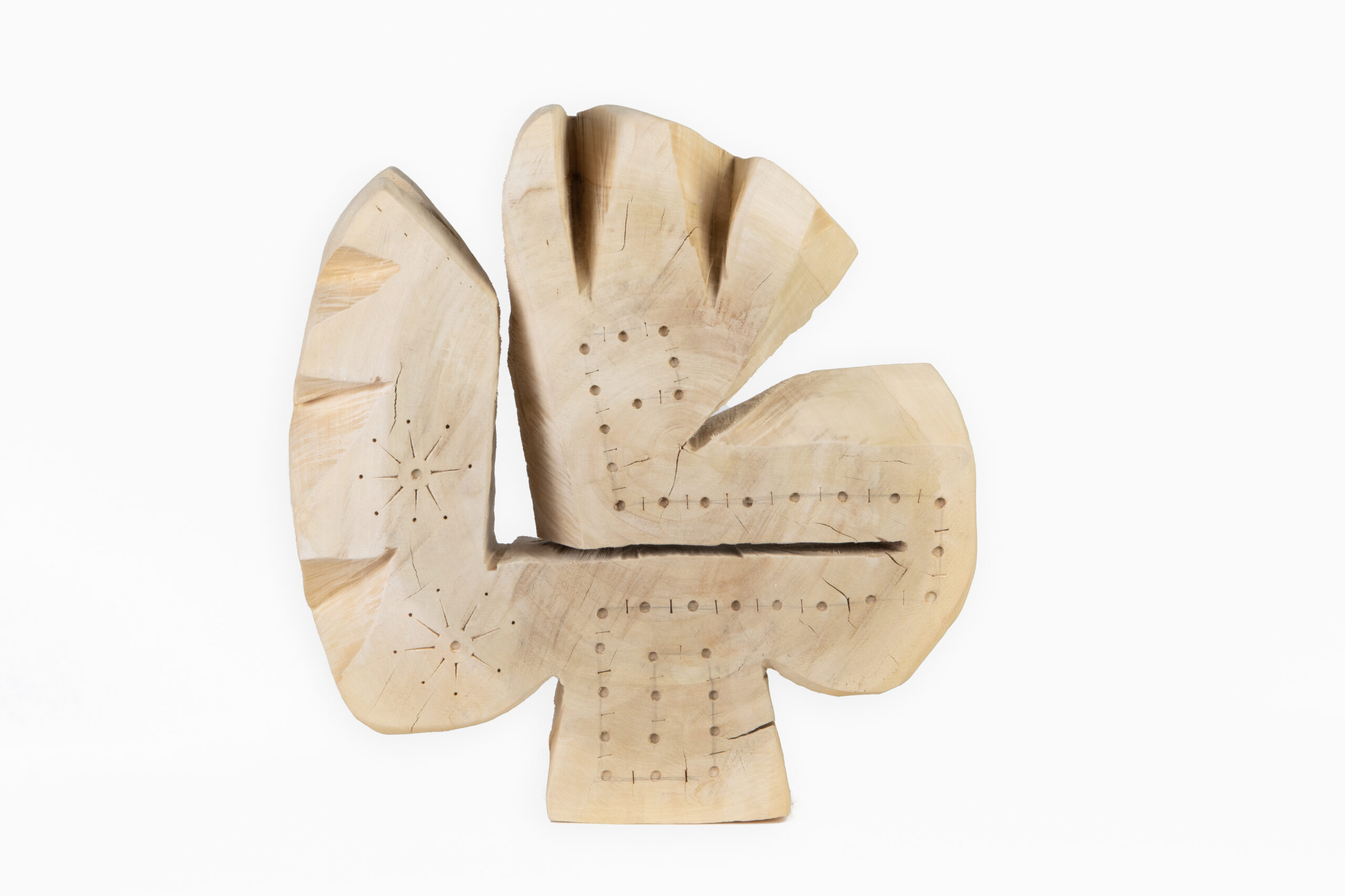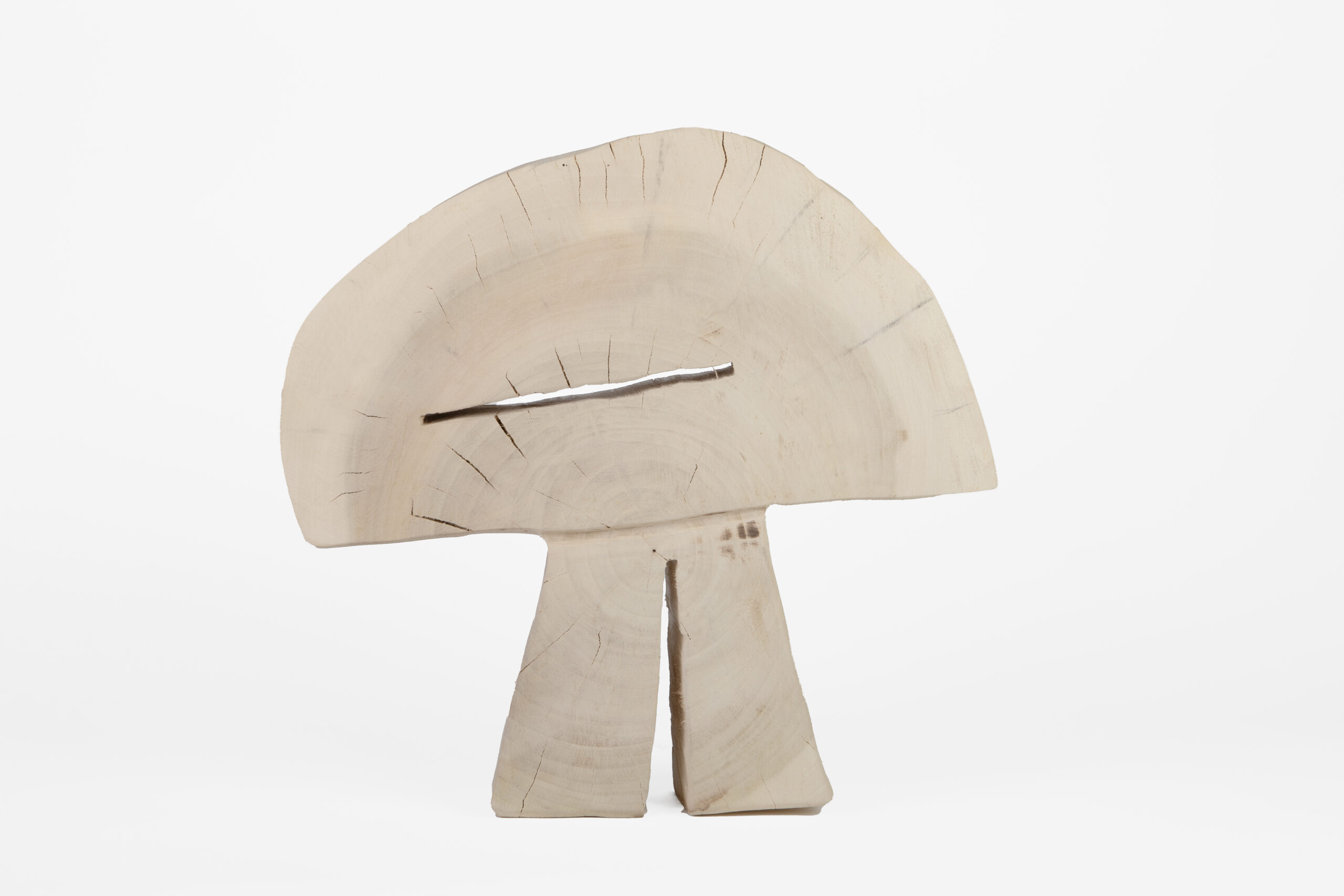For More Information
Evan Feldman
Director
efeldman@gpgallery.com
In this body of work, artist Randall Wilson derives sculpting method and style from an historical model of carving wood, and introduces embossing, once associated with traditional leather and tinwork of the southwest. His art features elements of both abstracted form and surface patterning, using green wood left to respond to the environment as it ages, creating a surface that reflects nature’s temporal processes. His new carvings are imbued with place and time, carved in a material that is culturally significant in the regional history of the southwest.
Randall lives and creates art in Corrales, New Mexico. His wood sculptures represent and reflect a lifetime of carving, expressing content fused in both tradition and innovation. Born in Denver to parents of European ancestry on his father’s side and Indigenous/Spanish colonial ancestry on his mother’s, his processes and works draw from many traditions. He spent numerous summers as a child in Watrous, New Mexico, where his grandmother Estefanita Hurtado lived in an adobe house, and where he was mentored by his uncle Leo Martinez, who introduced him to carving and who encouraged Randall’s lifelong passion for working in wood. Randall acknowledges the influence of his maternal family’s Native and Spanish heritage on his passion for working with and transforming the tradition of sculpting in green wood from local sources.
After completing his BFA in painting at Colorado State University and moving to Los Angeles, Randall spent over thirty years teaching at renowned design schools SCI-Arc, Art Center, and Otis. He earned an MFA in sculpture from the latter. He has received numerous awards for both teaching and design. His work has been celebrated in national and international media, including “Around the World” on CNN. A decade ago, Randall moved to Corrales to accept a faculty position at the University of New Mexico, teaching sculpture in UNM’s innovative College of Fine Arts. He challenges his students to consider material, technique, technology, content, and context as they develop as artists in dialogue with their own traditions and transformations.








